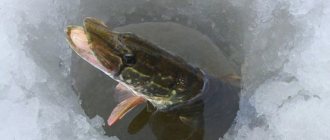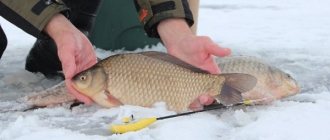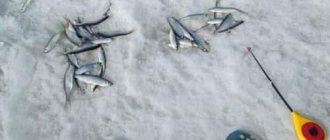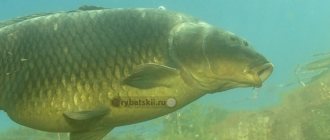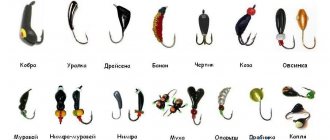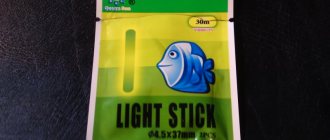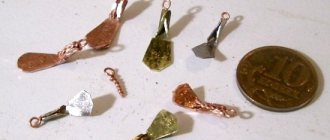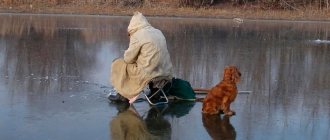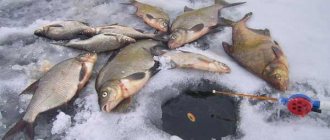Rhipus fish belongs to the salmon family, and to be precise, to the whitefish category. It also has other names, such as “vendace” or “Pereslavl herring”. Prefers to lead a gregarious lifestyle in close proximity to the bottom. Vendace is quite prolific and when fresh it smells like fresh cucumbers. This article is aimed at introducing the reader to this amazing fish, its behavior, and its beneficial properties.
Description of ripus fish
Appearance
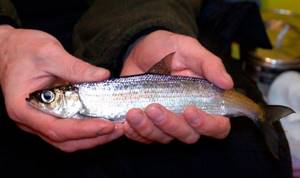
The ripus fish is characterized by a slender, elongated body. The back has a dark greenish or blue tint. The sides of the ripus are silvery, and the belly is pure white. The scales on the body are not tightly held, so cleaning this fish is not at all difficult, and the fins are not bright brown in color. The fish can grow up to half a meter in length, weighing about 1.5 kilograms.
A distinctive feature of the ripus is that it has a characteristic aroma of fresh cucumbers if it is just caught.
Where does the ripus fish live?
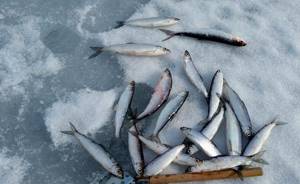
Rhipus, like most salmon species, prefers cool water. Therefore, this fish is found in reservoirs located closer to northern latitudes. These are Lake Ladoga and Lake Onega, as well as reservoirs of the Russian Urals and Siberia.
Fishermen of the Chelyabinsk region catch this fish in numerous reservoirs of this region, both paid and wild.
It prefers to be at depths of 3 to 5 meters, choosing quiet areas of the water area, closer to the coastal zone, where there are scatterings of stones at the bottom.
It mainly feeds on zooplankton and small fish such as smelt.
Spawning period
At the 3rd or 4th year of life, this fish can already spawn. This happens in November-December at depths of 1 to 1.5 meters.
Each female ripus is capable of laying up to 3 thousand eggs, yellow in color and not large in size. Ripus fry appear after 14-16 days.
Commercial catch
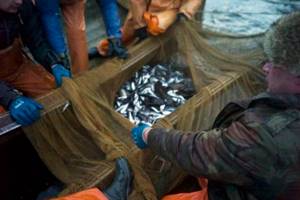
The ripus fish is distinguished by its fatty and very tasty meat, which determined the industrial approach to ripus fishing. In the Urals, this fish is caught in large quantities and, to some extent, it is the breadwinner here.
Rhipus is also grown artificially on special farms in the Chelyabinsk region. Ripus fry are released into reservoirs in the spring, and in the fall they are caught to sell or cook something.
Catch a ripus. Five unclassified secrets for a novice fisherman on Lake Uvildy
Moreover, how can a ripus keep its secrets, given the technical equipment of a modern fisherman? There are echo sounders, there are navigators, there is under-ice lighting of any power - please! It used to be the old fashioned way, more and more people fished at random in stationary houses with Ilyich light bulbs. He placed a plywood tent on the first ice, the lake was covered with snow - and you won’t be able to cross, you won’t be able to cross. Although in those days there were a limited number of fishermen, and there were many times more fish, so there was no reason to scour the lake. Today the picture is different: fishermen are a dime a dozen. Hole light
Today, the lake exclusively gives each fisherman according to his abilities, hence, in order to catch something, you need to adhere to several well-known rules, and the most important of them says: “As soon as I sat down, I ate fish!” This means that the most important thing in ripus fishing is the point, that is, the place where the fishing will take place, and in order not to end up, as they say, on the toilet, you need to at least approximately know the general cartography of the reservoir (depths, banks, pits, stone ridges). All this is gained through experience, year after year, on countless fishing trips with the help of an echo sounder and is stored in the navigator until the hour X comes.
The second indispensable condition for successful fishing is proper under-ice light, which serves to attract the fish themselves. The light is on under the water - the ripus under the tent is watching! And vice versa, the light goes out under water - go to bed, there are no fish here! Therefore, the lamps and battery should always be in working order, so to speak, alive!
Some fishermen believe that light supposedly attracts plankton and it is this food that attracts fish. Anything is possible, all opinions have the right to life. I just remember earlier, when car light bulbs were lowered under the ice, which made the water as bright as day; it was clearly visible that the fish were gathering near the lamp without any plankton. And how can microorganisms, accumulating, instantly reach your holes in the light? However, they turned on the light - the fish immediately appeared on the echo, turned it off - and no one was there! The lighting should be moderately powerful and warm, since the rhipus reacts weakly to cold light (blue, white) (tested, more than once). What power and how many light bulbs a fisherman needs, as a rule, is decided by himself. The subtlety is that you need to take into account two things - seasonality and the number of fishermen who, voluntarily or unwittingly, dropped anchor not far from you.
If the ripus is active on the first ice (December - mid-January), it is enough to lower the lighting to 7-10 watts under the hole to a depth of 1-5 meters. In the dead of winter, you need more light, and it is advisable to move the lamps several meters to the sides behind the tent, thereby increasing the illuminated circle. This is especially true in the second half of the season (February-March), when during the rutting process the fish are finally divided into small schools, the ripus ceases to be mobile and catches are reduced significantly. As for fishing on weekends and “kind” neighbors who, despite requests to keep a distance, drill holes in your shoe covers, then just for this purpose you should have a few paws in your spare tire for the usual standard (two light bulbs of 5-7 watts each). Thus, by forcibly increasing the light flux, figuratively speaking, you are pulling the blanket over yourself. On weekends (there are a lot of people) it is better to stay at home, and if you really feel like it, you can additionally use a light bulb lowered under the ice 5-7 meters (behind the tent) and directed not down, but up, which in turn creates a glow of ice, a reflection which can be seen from half a mile away underwater.
Tackle balance
The third rule says: the one who sits first with the flow will catch the fish! That is, a crusher (ground boiled jig) with sand falls from above, it is carried away by the current, the fish follows the bait and rests against your tackle. The fish will be much less interested in the tackle of your friend sitting behind you. Based on this, two people (two tents) need to sit side by side perpendicular to the current. For successful fishing, by definition, there should not be a third angler nearby.
Fourth is gear and equipment. When fishing for ripus, there are two main fishing techniques: wire fishing and “balda”. And since both methods have their merits, you can’t stop at just one of them.
“Balda” (tossing and shallow shaking of the equipment) is most effective when the fish is active and greedily grabs almost all baits, from beads and polystyrene foam to jigs and bloodworms. The peculiarity of this equipment is that it uses a heavier sinker (3-4 grams) or a light 2-gram weight with an anchor suspension of 6-8 grams. This allows you to quickly deliver equipment to the working depth. Lowered faster, caught faster, significant time savings overnight. By the way, this is part of the secret of catches of more than a hundred heads.
In turn, the retrieving method is especially indispensable in the dead of winter, when the fish is inactive, constantly picky, pokes and does not want to take it. As a rule, the bait in the wire is the same boiled maggot or small boiled jig that the main complementary food consists of. Smoothly lowering and swinging the equipment, using the nozzle on the hooks, create the appearance of falling bait. It was this method of fishing during the weakest bite that helped us out more than once. It is important that, with any fishing method, all tackle, from the fishing rod to the sinker, is properly balanced. Only then can you count on a good catch.
Weather for luck
Fifth is bait, thanks to which the fish is kept in one place, namely ground, boiled jig (pusher) and mixed, preferably with lake sand. Lake sand is larger, “ridged”, shines and plays better when falling, which is more quickly caught by the lateral line of fish. For constant feeding with bait, one-time fishing requires 500-1000 grams of groundbait plus 3-4 kilograms of sand. Some fishermen use feeders (syringes) falling along the line, but, as experience shows (catch comparisons), there is not much difference. The more significant point is in the first four points.
Well, the last thing that needs to be taken into account is the absence of a full moon and the weather, which should be stable, without sudden jumps in atmospheric pressure and temperatures. And everything else is called luck or as God willing!
On a note
"Bolda."
Light long fishing rod, wire reel, medium-hard guards (thick nipple, lavsan), main “rope” - fishing line 0.22-0.25, garland (ikura hooks 50434/0.39/9, stepsons 0.14 mm/length 5- 6 cm, garland line 0.12 mm, sinker 3.5-4 g). If the main line is set to 0.3 mm with 3 g of load, the equipment will not work as expected (water resistance). And vice versa, if you use a 0.18 mm fishing line with a load of 4-5 g, the garland will fire too sharply when thrown, which is also not good. When using a solid garland - the entire fishing line is 0.16 mm, the anchor is 6 g, the working load is 2 g, 16-20 hooks (Led manna garland) - the advantage is that with such a large number of hooks, all fish horizons overlap and there is no need to search for it you have to constantly work the coil. But on the other hand, it’s easy to get confused with such a mass of hooks, and time on Uvilda fishing is either the angler’s main ally or his enemy!
Wiring.
As a rule, for line fishing, a shorter and lighter fishing rod is selected so that the hand does not get tired. It is equipped in approximately the same way as the “bulda”, with the exception of a softer guard, or, so to speak, “snitch”, since the load used in this case is no more than 3 g. In this case, the stepson leashes should be made from 0.12 fishing line and no more than 3 cm, because when shaking or swaying the fishing rod, short leashes are much more sensitive than long ones and more accurately convey the game.
Fishing for ripus

To catch ripus, you need to know its habits in order to determine the places where it likes to be. In the process of catching ripus, a chebak is also caught. Most likely, you need to look for ripus where the chebak is, since it can be part of the ripus’ diet.
Where is it caught?
Rhipus is a schooling fish, so if you get into a school, you can provide yourself with a catch. The fish does not like fast currents, so it chooses quiet bodies of water or areas of water where there is no current. It can be located both at depth and not far from the shore, if the bottom is sandy mixed with stones. Often found within small islands located on various lakes.
Ripus on Uvildy
When is the best time to catch ripus?

Since the ripus is considered a relative of the whitefish, fishing has similar features. They begin to catch it when strong ice is established on reservoirs. This period continues almost until spring, when a real flood will not allow fishing at all. Around the end of winter and spring, the ripus bite is most intense, which means fishing is the most effective.
A characteristic feature of catching this fish is the fact that ripus must be caught at night. According to experienced fishermen, the greatest success awaits those fishermen who have their holes illuminated. This can be done either with a flashlight or with car headlights. Here everything depends on imagination and possibilities.
When fishing at night, and even in winter, when there is severe frost outside, a tent will never hurt. For example, on the Chelyabinsk Lake Uveldy, many fishermen who regularly come to this reservoir have built insulated houses here, many of which today resemble a tent camp.
Features of the tackle
Tackle (garland) for catching ripus
This fish is caught with a regular winter fishing rod with a hard tip. They start fishing from the maximum depth, gradually reducing it. It can be at any depth, so ripus are caught “vertically”. For greater results, you should not fish with just one jig. As a rule, several of them are knitted on a fishing line, at a distance of about 30 cm from one another.
It is better to use a stiff line so that it does not twist, but the hook should be light and thin.
It is advisable to always fish in one hole. This is especially true for those fishermen who decide to fish in the same tent. If you drill two holes side by side, the line may become tangled due to the fact that you have to fish at great depths. As a result, the fishing process will not turn into an interesting activity, but into a waste of time.
Types of bait
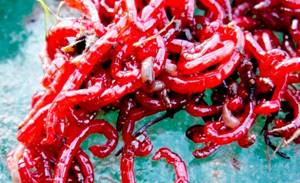
To catch ripus, fishermen use a wide variety of baits. Bloodworms are considered the most common, although good results can be obtained if insect larvae such as burdock flies or bark beetles are planted.
Some fishermen prefer ordinary pieces of lard. Therefore, if possible, it is better to take several different baits for fishing, and during the fishing process it will become clear which one the fish liked best.
Fishing for ripus
In the European part of Russia, ripus fishing is done industrially using nets, so it is not of interest to amateurs. Winter fishing in the Southern Urals is a completely different matter. An original method of ice fishing for ripus using light bulbs has long been used here.
The choice of this time of year is not accidental. Rhipus is a cold-loving fish and spawns in late autumn. In the Chelyabinsk region, its fishing is prohibited from October to the first ten days of December inclusive. But from the 11th you can start fishing.
The Southern Urals have a harsh continental climate, and by this date the thickness of the ice cover will be sufficient to provide fishermen with a safe stay on the surface of reservoirs. The most popular fishing for ripus is on Lake Uvildy, located 80 km northwest of Chelyabinsk.
Despite the relatively large size of Lake Uvildy (area about 70 sq. km, depth up to 40 m), it freezes quite quickly and is ready to receive fishermen by the end of the ripus spawning season. In general, the environs of Chelyabinsk abound in lakes where you can find ripus.
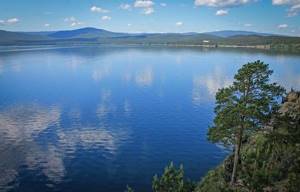
Lake Turgoyak, the “Ural Baikal”, is one of the first places in Western Siberia where the rhipus was inhabited.
No less popular is fishing on Turgoyak (10 km east of Zlatoust), Duvankul (2 km from Yuzhnouralsk) and others. Some reservoirs, for example, Lake Kasargi, are generally located almost within the city limits of Chelyabinsk.
Useful properties of ripus fish
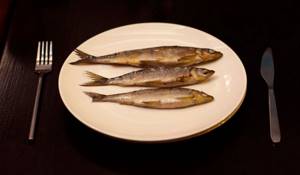
Rhipus is a valuable commercial fish due to its fatty and tasty meat. It is highly valued in cooking, but Ural housewives are more familiar with ripus.
This fish is mainly salted, but is often fried and baked in the oven. Many people also love it because it has a small number of bones, which simplifies the process of preparing it.
Availability of vitamins and minerals
The meat of ripus fish contains such useful components as:
- Phosphorus.
- Omega-3 fatty acids.
- Magnesium, etc.
- In addition to microelements, the presence of vitamins, including vitamin PP, is noted.
The presence of useful substances in this fish allows you to optimize the functioning of almost all internal human organs, including the cardiovascular system, central nervous system and immune system.
Calorie content of ripus
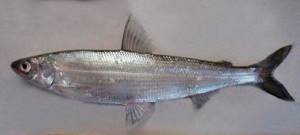
Fish meat is considered low-calorie, since 100 grams contains only 75 kcal . In this regard, ripus meat can be classified as a dietary food product.
Habitat
This active fish gathers in schools and prefers to live at a depth of three to five meters in cool and quiet water. Most often it swims in lakes and reservoirs located closer to northern latitudes.
Lakes Ladoga and Onega are considered its homeland, from where it moved to Lake Peipsi, Seliger and other lakes of Karelia. Later, it appeared in the Ural and Siberian reservoirs, where it was released in the 30s of the 20th century.
She prefers quiet coastal areas of reservoirs with a rocky bottom and clear water. Therefore, it does not live near large cities; people go after it away from “civilization.”
Recipes for making ripus
Ripus Pie

To prepare the pie you will need:
- 0.5 kg of ripus fish meat.
- 3 chicken eggs.
- 2 medium sized onions.
- 1 tablespoon of vegetable oil.
- 50 grams of butter.
- 400 grams of yeast dough.
- 0.5 cups rice.
- Salt and spices to taste.
How to cook:
- The fish is cleaned and cut with bones removed. The result should be 2 fillets of ripus meat.
- Eggs and rice need to be boiled.
- Roll out the dough and place rice, fish, eggs and chopped onions on it.
- Season everything with salt and pepper on top, then roll the pie.
- Brush the top of the pie with egg yolk, after which it is placed in the oven preheated to 180 degrees. The pie should be cooked for one hour.
After the pie is ready, it is served to the table. As a rule, a cold pie is no longer as tasty.
Jellied pie with fish and potatoes, recipe for delicious dough with sour cream
Fried rhipus
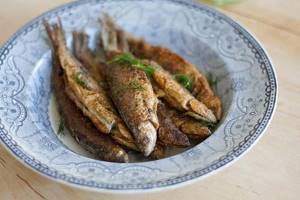
You will need the following ingredients:
- One kilogram fish carcass.
- Lemon juice.
- Vegetable oil.
- Garlic.
- Pepper to taste.
Technological stages of preparation:
- The fish is cleaned, cut and washed, after which the fish fillet is prepared.
- Take a frying pan, pour a little vegetable oil into it and add chopped garlic.
- After this, the fish fillet is placed in a frying pan, poured with lemon juice, salt and pepper.
- The fish meat is fried on both sides until golden brown.
Ripus is served with baked or boiled potatoes.
Fried rhipus
General information and description
Being a freshwater inhabitant, the rhipus prefers to be found in various lakes , where it forms large flocks of several dozen individuals. Full maturation occurs 2-4 years from birth.
The body of the fish is particularly slender and dark in color. At the same time, the lateral areas are painted in silvery tones, and the fins remain inconspicuous. Existing forms of this species differ only in size. If we talk about ripus, it is a large variety of vendace. It is characterized by attachment to deep-sea areas and prolonged maturation. A unique feature of the fish is the characteristic cucumber smell that it emits when fresh.
An adult grows up to 50 centimeters in length, gaining about 1.5 kilograms of mass. When choosing locations, it gives preference to quiet lake waters, usually with a sandy bottom near the shore. When laying eggs, which occurs in November - December, they move to areas with a depth of no more than 1.5 meters. The laid eggs can remain at the bottom and form for 16 days. They are distinguished by their tiny size and yellow tint.
Rhipus is highly valued for its delicious fatty meat, which has become the reason for intensive fishing. Recently, fish have been bred artificially in special fishing farms.
Like other representatives of the salmon family, rhipus likes to stay in areas with cool water, so it is advisable to look for it in northern latitudes with a temperate climate. Large populations are present in the following lakes and reservoirs:
- Ladoga lake.
- Lake Onega.
- Reservoirs of the Urals and Siberia.
Chelyabinsk fishermen fish both in natural, wild conditions and in private reservoirs.
Ripus spends a significant part of its life at a depth of three to five meters, preferring quiet, calm water at a short distance from the shore, where stones and snags are present.
